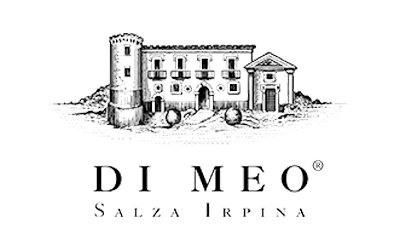Three producers from Campania paid tribute to Pompeii with important and different projects-Mastroberardino, Di Meo and Bosco de' Medici. Projects that revive the city buried by the eruption of Vesuvius.
Pompeii, famous for its well-preserved ruins, has left an indelible mark on world history. Buried under a blanket of ash and lapilli during the eruption of Mount Vesuvius in 79 AD, was discovered in the 18th century and has since fascinated visitors from all over the world, so much so that it is one of the most visited archaeological sites in the world and a UNESCO World Heritage Site.
Pompeii and its connection to wine
In addition to its historical importance, Pompeii has a deep connection with wine, which dates back thousands of years to Roman times, when it reached its peak as a commercial and agricultural hub, thanks to its strategic location near the sea, fertile surrounding land and Mediterranean climate. Renowned for the production of high-quality wine, its ruins testify to its importance in the daily lives of the Romans and its influence on society. To visit Pompeii is to immerse oneself in a past rich in history and wine-making traditions that are still an integral part of Campanian culture, with several wineries bearing witness to the production of wine in Pompeii with the legendary Lacryma Christi.
Numerous Roman houses and villas had their own vineyards and private wineries, where wine was produced for personal use and for sale, often equipped with large wooden vats for fermentation and aging. The frescoes and wall decorations in the houses of Pompeii often depict scenes of banquets and feasts, where wine was a constant presence.
Ancient varieties rediscovered through DNA
The discovery of Pompeii has allowed archaeologists to study in detail the wine culture of ancient Rome. Glass bottles and amphorae found in the ruins provided valuable information on wine production and trade. In addition, the remains of grapes and grape seeds found in the cellars made it possible to identify through DNA the grape varieties grown in Pompeii., including Falanghina, Coda di Volpe, Greco, Aglianico, Piedirosso and Sciascinoso, bearing witness to the very distant origins. This ancient and fascinating story transports us back in time. It unveils the secrets of wine that still live on in the vineyards and cellars that tell of a rich and glorious past.

Three producers from Campania paid tribute to Pompeii with important and different projects.
Mastroberardino and the Villa dei Misteri project
In 1996, the Archaeological Superintendence of Pompeii commissioned the historic winery Mastroberardino to lead the Villa of the Mysteries project, with the support of the Italian Presidency, for the reintroduction of viticulture in the ancient city. In about one and a half hectares within the archaeological area, on volcanic ash, Piedirosso and Sciascinoso vines were planted, following the techniques of the ancient Romans, with a planting system called stake vineyard. From the experimental vineyard was born in 2001 the Pompeiano IGT Villa dei Misteri, which was sold at auction and the proceeds of which were used to expand and support the project, which then saw the addition of Aglianico planted in sapling form. Villa dei Misteri is the only wine that testifies to the greatness of Pompeii’s viticulture by employing the botany applied to archaeology.
Di Meo, the Hamilton Reserve and the Blue Vase.
In 2015, the brothers Di Meo have dedicated the thirteenth chapter of their Calendar,“A Grand Tour around Vesuvius,” to the relationship between London and the former capital of the Kingdom of the Two Sicilies. For the occasion, they presented for the first time in London, at the Royal Academy, the Taurasi Docg Riserva Hamilton 2007, a limited edition of the Vini D’Arte line. On the label, a scene from the eruption of Mount Vesuvius, a reproduction of the cover of Sir William Hamilton’s precious book. Distinguished English diplomat, volcanologist, archaeologist, antiquarian and collector lived in Naples from 1764 to 1800.
On December 29, 1837, in front of Villa of the Mosaic Columns in Pompeii, the earth unearthed a‘work of‘art from the mid-first century AD: the Blue Vase. Made with the complex technique of cameo glass (involves covering a dark blue glass surface with white glass paste and working it quickly in relief before it hardens), the Blue Vase is a small wine amphora decorated with an elaborate grape harvest scene. Vine shoots and leaves d‘acanthus, boughs of oak and ivy, poppies and laurel, quince and rose hips, chubby little cupids gather bunches of‘grapes and harvest playing and dancing gracefully. Roberto and Generoso Di Meo, fascinated by the suggestions of the amphora, produced in collaboration with MAN, the National Archaeological Museum of Naples, for the first and only time, the Taurasi Docg Riserva Vino Blu 2012.
Bosco de’ Medici and the archaeologist Dressel
In addition, close to the archaeological area of the Pompeii excavations, the Palomba family has given body and substance to the Pompeii wine project with the Bosco de’ Medici winery (established in 2014 and with roots going back much further). The Dressel 19.2 is a tribute to German numismatist and archaeologist Heinrich Dressel, an expert in decipherments on the “amphorae” found at Pompeii and Monte Testaccio in Rome, dating from the Roman Empire. Number 19.2 refers to the cadastral parcel of the vineyard. The origin of production returns through wine all the secrets of the magical and telluric land that characterizes Vesuvius. Some of the estate vineyards lap the small necropolis of Porta Sarno dated to the 2nd century BC.
The four wines Villa Dei Misteri, Hamilton, Vino Blu and Dressel 19.2, are “out of competition” productions espousing projects that go far beyond the wine itself, offering the world of wine the story of the world. I personally have always followed the Mastroberardino, Di Meo and Bosco de’ Medici wineries and have had the opportunity to taste the vintages reported. The magnitude of the initiatives that moved the productions goes hand in hand with the beauty of the wines.








